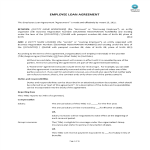Employment Manual and Employee Signature

Speichern, ausfüllen, drucken, fertig!
How to write an employment manual and employee Signature? Why is it necessary to have an employee manual? Download this Employment Manual & Employee Signature now!
Preis: USD 2.99
Jetzt downloaden!

Verfügbare Premium-Dateiformate:
.docx- Dieses Dokument wurde von einem Professional zertifiziert
- 100% anpassbar
Legal Gesetzlich employee Mitarbeiter
How to write an employment manual and employee Signature? Why is it necessary to have an employee manual? Our templates are designed to provide you with the guidance you need to create a clear and concise employee manual. Download this Employment Manual & Employee Signature now!
An Employment Manual, also known as an Employee Handbook or Employee Manual, is a written document provided by an employer to its employees. It serves as a comprehensive guide to the company's policies, procedures, rules, expectations, and benefits. The Employee Manual is designed to inform employees about their rights and responsibilities while working for the organization and to establish clear guidelines for conduct in the workplace.
Here are some common elements typically found in an Employment Manual:
- Introduction: An introduction or welcome message from the company's leadership, expressing the organization's commitment to its employees and its mission and values.
- Employment Policies: Detailed policies related to employment, including equal employment opportunity, anti-discrimination and harassment policies, and policies on accommodation for disabilities.
- Code of Conduct: Guidelines for acceptable behavior and professionalism in the workplace, including dress code, punctuality, and communication standards.
- Work Hours and Attendance: Information about regular work hours, attendance requirements, and how to request time off.
- Compensation and Benefits: Details on salary or wage structure, pay schedules, benefits (e.g., health insurance, retirement plans), and other forms of compensation.
- Performance Expectations: Expectations for job performance, including job descriptions, performance evaluations, and promotion opportunities.
- Leave Policies: Policies regarding paid time off, holidays, sick leave, and family and medical leave.
- Employee Development: Information on training and development opportunities provided by the company.
- Health and Safety: Safety guidelines, emergency procedures, and information on workplace safety programs.
- Technology and Information Usage: Rules and expectations for the use of company technology and information systems, including computer and internet usage policies.
- Confidentiality: Policies regarding the protection of confidential company information and employee responsibilities regarding confidentiality.
- Termination and Resignation: Procedures for ending employment, including resignation, termination, or retirement processes.
- Employee Rights: Information on labor laws and employee rights, including rights related to breaks, overtime, and accommodations.
- Grievance and Complaint Procedures: Guidelines for addressing workplace concerns, including reporting procedures and conflict resolution.
- Acknowledgment and Signature: A section where employees acknowledge that they have received, read, and understood the contents of the Employment Manual. Employees typically sign and date this section as evidence of their agreement to comply with the policies outlined in the manual.
The employee signature part of the manual involves having each employee review the handbook and then sign a statement confirming that they have received, read, and understood its contents. This signature serves as documentation that the employee was informed about the company's policies and agrees to abide by them.
Download this professional legal
employment manual & employee signature template if you find yourself in this situation and save
yourself time, and effort and probably reduce some of the lawyer fees! Using our
legal templates will help you reach the next level of success in your
education, work, and business! However, we still recommend you to consider
consulting a local law firm in case of doubt to support you in this matter.
HAFTUNGSAUSSCHLUSS
Nichts auf dieser Website gilt als Rechtsberatung und kein Mandatsverhältnis wird hergestellt.
Wenn Sie Fragen oder Anmerkungen haben, können Sie sie gerne unten veröffentlichen.


